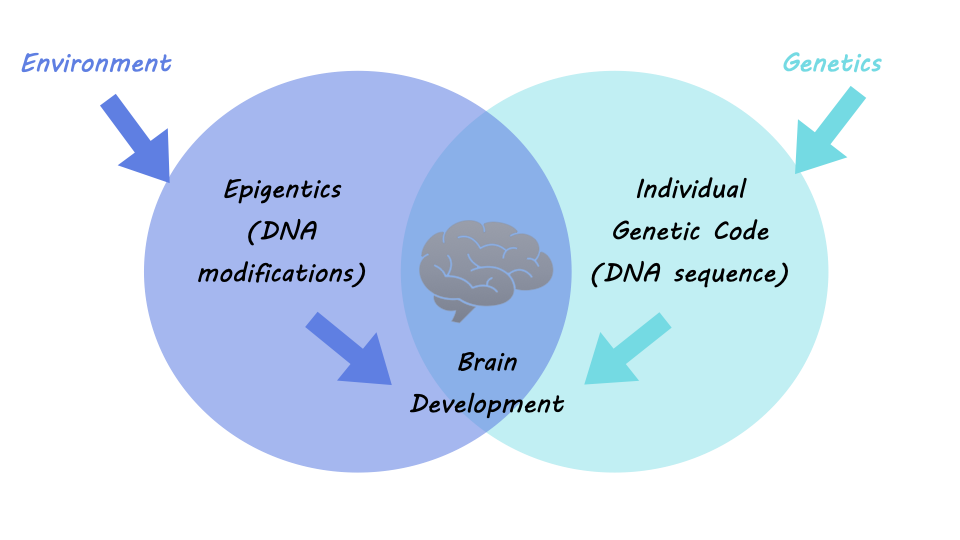The Impact of Environment-Gene Interaction on Brain Development
Post by Elisa Guma
What did we learn?
Brain development is a highly orchestrated, complex process driven by genetic background and its interaction with the environment, which can exert both positive and negative influences on development. For example, exposure to an enriched environment promotes the development of healthy brain circuits. Furthermore, environmental enrichment has been shown to help aid in the production of new neurons (neurogenesis) in the hippocampus, which may buffer against age-related cognitive decline. Recent evidence suggests that environmental enrichment may be exerting these positive effects by inducing epigenetic changes in the DNA of hippocampal neurons. More specifically, it can reverse the negative effects of aging on DNA methylation in neurons of the hippocampal dentate gyrus involved in neuroplasticity and neurogenesis, critical for learning and memory (see Zocher and colleagues).
Unfortunately, environmental exposures may also disrupt neurodevelopment, which may, in turn, increase the risk of developing psychiatric illness. These negative effects may be particularly heightened if coupled with genetic risk. Just as the hippocampus has been found to be sensitive to positive environmental pressures, it is also susceptible to negative influences. Recent evidence by Song and colleagues has shown that exposure to both a genetic risk factor (risk gene for schizophrenia, DISC1) and an environmental risk factor (in utero exposure to maternal infection) can disrupt the structural and functional development of projections from the hippocampus to the prefrontal cortex in early development. This pathway may underlie many of the cognitive deficits associated with psychiatric illness.
What's next?
Our genes and the environment we are exposed to act in concert to shape our brain and behavioral development. Understanding how these factors interact during specific developmental windows could help us identify how and when to intervene during a child’s development. Identifying potential environmental interventions to buffer against both environmental and genetic risk factors for psychiatric illness will be an interesting avenue for future research in 2022.

